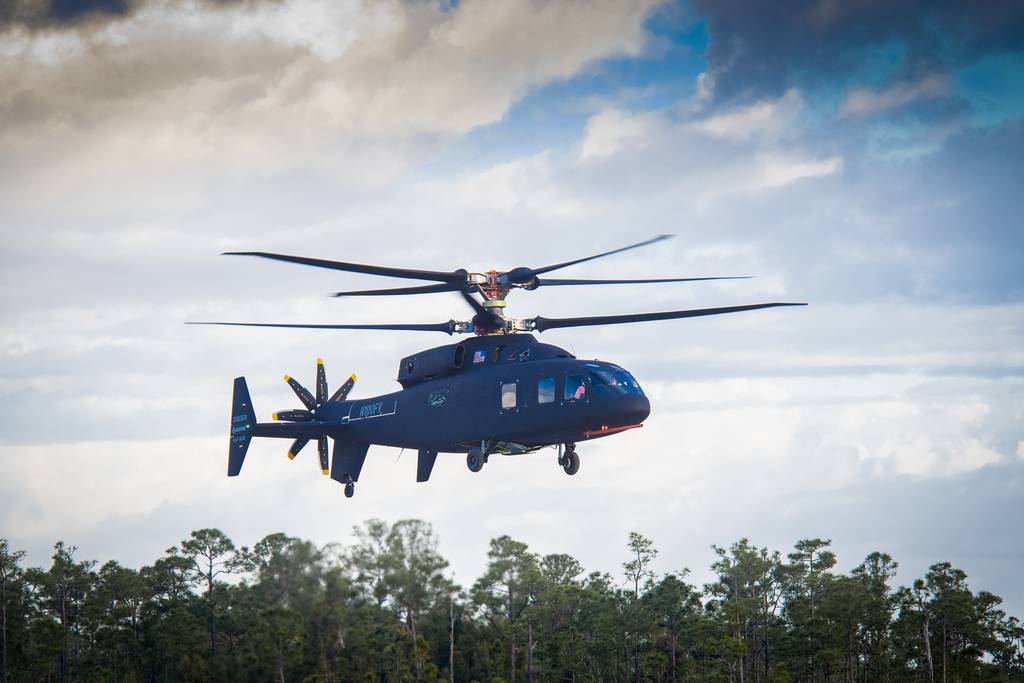WASHINGTON — The U.S. Army is wading further into the process of buying a future long-range assault aircraft to replace UH-60 Black Hawk helicopters by issuing a request for information to industry to see what might be in the realm of the possible when it comes to fielding a new helo by fiscal 2030.
The service posted an RFI on the Federal Business Opportunities website April 4.
The Army is planning to pursue a program of record for the future aircraft, known as FLRAA, with Special Operations Command, and U.S. Marine Corps acquisition programs are expected to follow roughly two years later, the RFI notes.
RELATED

The service wants to award contracts in the fourth quarter of FY21 for preliminary designs with a review of those designs in the second quarter of FY23, a first flight in the third quarter of FY24, followed by a critical design review in the fourth quarter of FY24.
The plan, according to the RFI, is to get the first unit equipped in the second quarter of FY30.
While most of the cost requirements are not made public in the RFI, the Army does note that it wants an aircraft that is roughly $43 million per unit.
The RFI requests that industry responses include a detailed scheduled that accelerates the fielding of FLRAA.
The Army specifically asks industry to “provide a detailed description of tailored, alternative or innovative approaches that streamlines the acquisition process to accelerate the program as much as possible.” The RFI also asks industry to include growth potential in terms of a variety of areas including weapon systems that would keep the aircraft relevant over a 50-year useful life.
The Army wants FLRAA — at a minimum — to have a 95% maximum rated power to perform a 500 feet per minute vertical rate of climb from a hover-out-of-ground effect. The helicopter should be able to fly at 6,000 feet in 95 degree heat with 12 passengers.
The service has set its objective requirements for the aircraft to maintain 100% maximum continuous power in a 500 feet per minute vertical climb.
The aircraft should at least be able to fly 1,725 nautical miles one way without refueling. But the service would like to have the capability to fly 2,449 nautical miles. FLRAA should also be able to fly up to 250 knots, but with an objective cruise speed goal of 280 knots.
The Army has already collected a great deal of data on a future vertical lift platform of this size through its Joint Multi-Role Technology Demonstrator, or JMR-TD.
RELATED

Bell and a Sikorsky-Boeing team have each built a technology demonstrator aircraft to help the Army lay out its requirements for a future aircraft. Bell’s V-280 Valor tiltrotor has been flying since December 2017, and the Sikorsky-Boeing SB-1 Defiant flew last month for the first time.
Brig. Gen. Wally Rugen, who is in charge of the service’s FVL modernization efforts, said last week that because of the data collected through the JMR-TD process as well as additional studies and modeling, the service now thinks it has enough information to move more quickly into a full and open competition for FLRAA.
And Lt. Gen. Paul Ostrowski, the military deputy to the acquisition chief, said in a Senate Armed Services Airland Subcommittee hearing this week, that the Army is presenting an acquisition strategy to the Pentagon’s acquisition head that focuses on a nondevelopmental item approach to procuring a new long-range assault aircraft that could lead to a competitive downselect by FY22.
Jen Judson is an award-winning journalist covering land warfare for Defense News. She has also worked for Politico and Inside Defense. She holds a Master of Science degree in journalism from Boston University and a Bachelor of Arts degree from Kenyon College.








